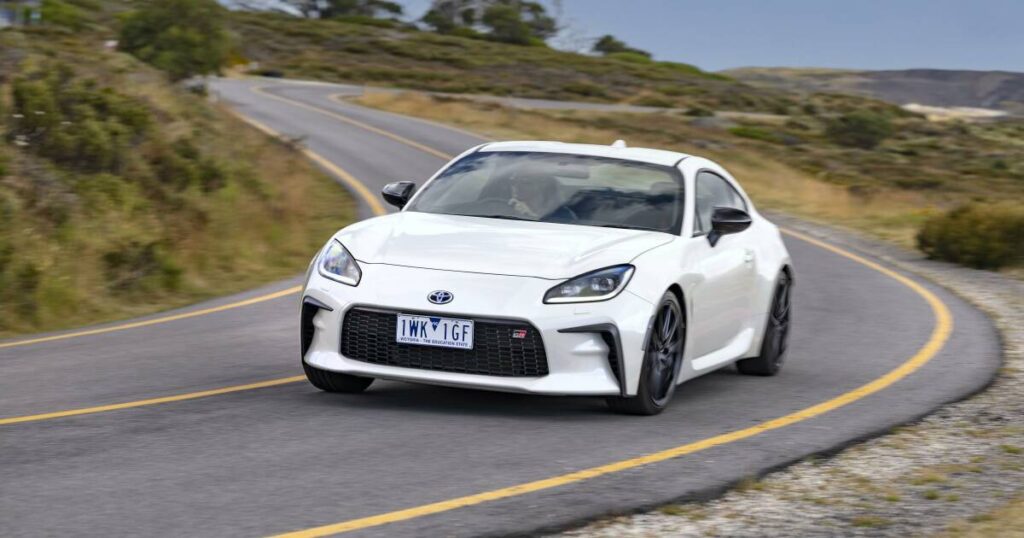
The sports car landscape is set for a shake-up as Toyota plans to base its next-generation GR86 on the Mazda MX-5’s lightweight, rear-wheel-drive platform. This strategic shift, reported by Best Car magazine and highlighted by Forbes, marks a significant departure from Toyota’s previous collaboration with Subaru for the GR86 line.
According to the Japanese magazine, a team of senior Mazda engineers has already been integrated into Toyota’s development process. Their mission: to adapt the current MX-5 platform for the upcoming GR86. This collaboration signals a new chapter in the storied history of both brands, promising unique developments in the sports car segment.
New Dynamics in Sports Car Development
The transition from Subaru to Mazda as Toyota’s partner for the GR86 is a notable pivot. Previously, the Toyota GR86 and Subaru BRZ were essentially twins, differentiated mainly by styling tweaks and handling adjustments. However, the new partnership with Mazda aims to introduce more distinct characteristics between the MX-5 and the GR86, despite both being manufactured at Mazda’s Hiroshima facility.
The MX-5 will maintain its iconic two-seater configuration, while the GR86 will benefit from a slightly extended platform to accommodate its 2+2 seating layout. This approach allows each vehicle to retain its unique identity while sharing a common engineering foundation.
Powertrain Innovations
In terms of powertrains, the MX-5 and GR86 will diverge significantly. The MX-5 is expected to continue with a Mazda 2.0-litre four-cylinder engine, potentially featuring hybrid technology. Meanwhile, the GR86 will likely adopt a Toyota 2.0-litre hybrid setup, aligning with the industry trend towards electrification.
Interestingly, Mazda’s chief technical officer, Ryuichi Umeshita, hinted in July that the next-generation MX-5 might utilize a larger 2.5-litre engine. This statement adds another layer of intrigue to the development process and the potential configurations of the upcoming models.
Historical Context and Industry Trends
The collaboration between Toyota and Mazda is not without precedent. The current Mazda MX-5, known as the ‘ND’ model, served as the foundation for the Fiat 124 Spider. Produced by Mazda from 2016 to 2019, the 124 Spider featured distinctive front and rear designs and was powered by Fiat’s 1.4-litre turbocharged engine. This historical partnership underscores Mazda’s capability and willingness to collaborate with other manufacturers to create unique automotive experiences.
As the automotive industry continues to evolve, partnerships like the one between Toyota and Mazda are becoming increasingly common. Manufacturers are seeking innovative ways to leverage each other’s strengths, reduce development costs, and accelerate the adoption of new technologies. This trend is particularly evident in the sports car segment, where the balance between performance and sustainability is crucial.
Looking Ahead
Should the Best Car report prove accurate, the Toyota-Mazda collaboration could redefine expectations for the GR86 and MX-5. Enthusiasts eagerly anticipate how the blend of Mazda’s engineering prowess and Toyota’s hybrid technology will manifest in these iconic models.
The move represents a broader industry shift towards strategic partnerships, as automakers navigate the challenges of electrification and evolving consumer preferences. As these developments unfold, the automotive world will be watching closely to see how this collaboration impacts the future of sports cars.
Ultimately, the success of this partnership will hinge on the ability of both companies to deliver vehicles that resonate with consumers, balancing performance, innovation, and sustainability. As the industry continues to transform, the Toyota GR86 and Mazda MX-5 could serve as benchmarks for future collaborations.







